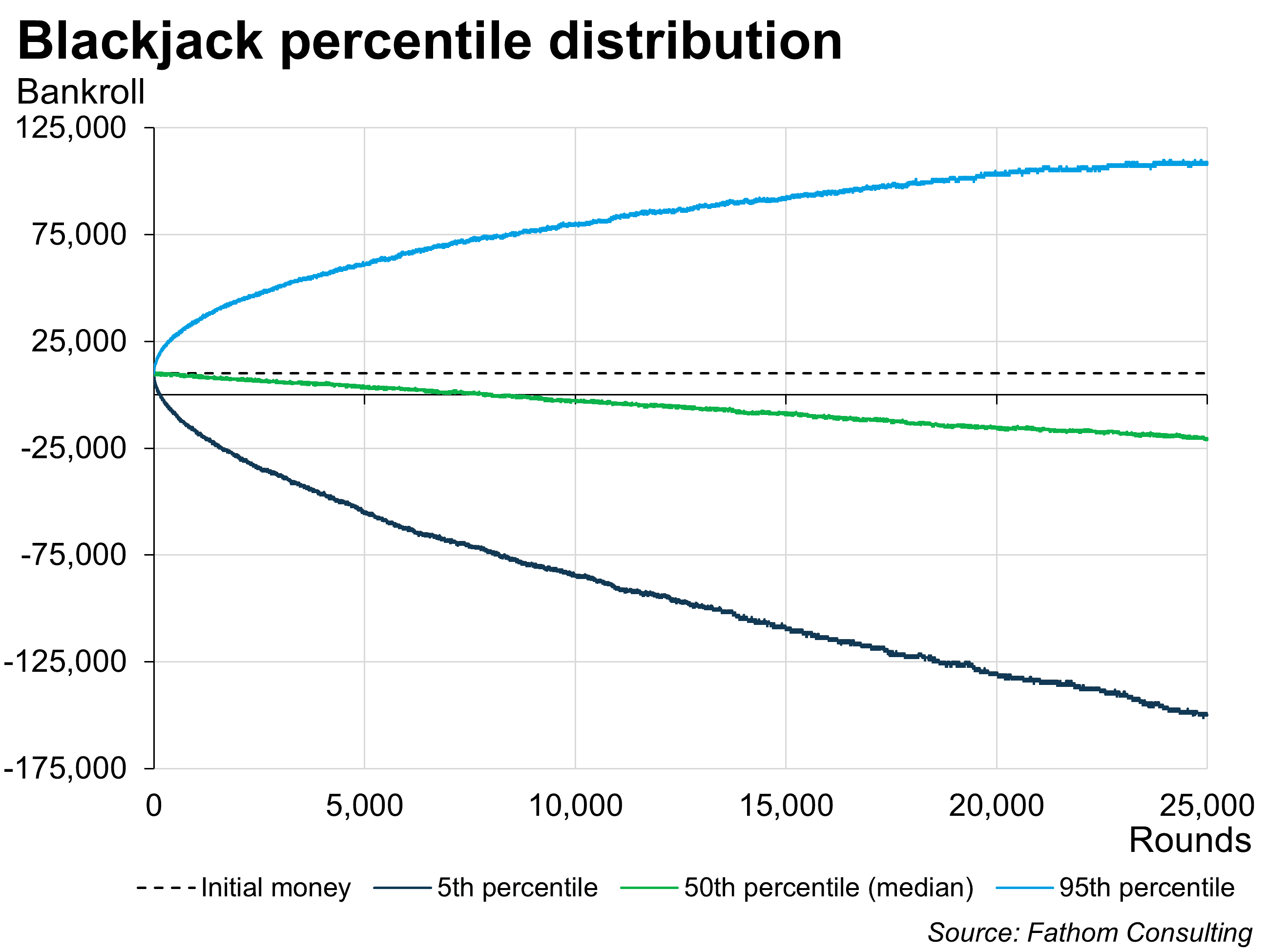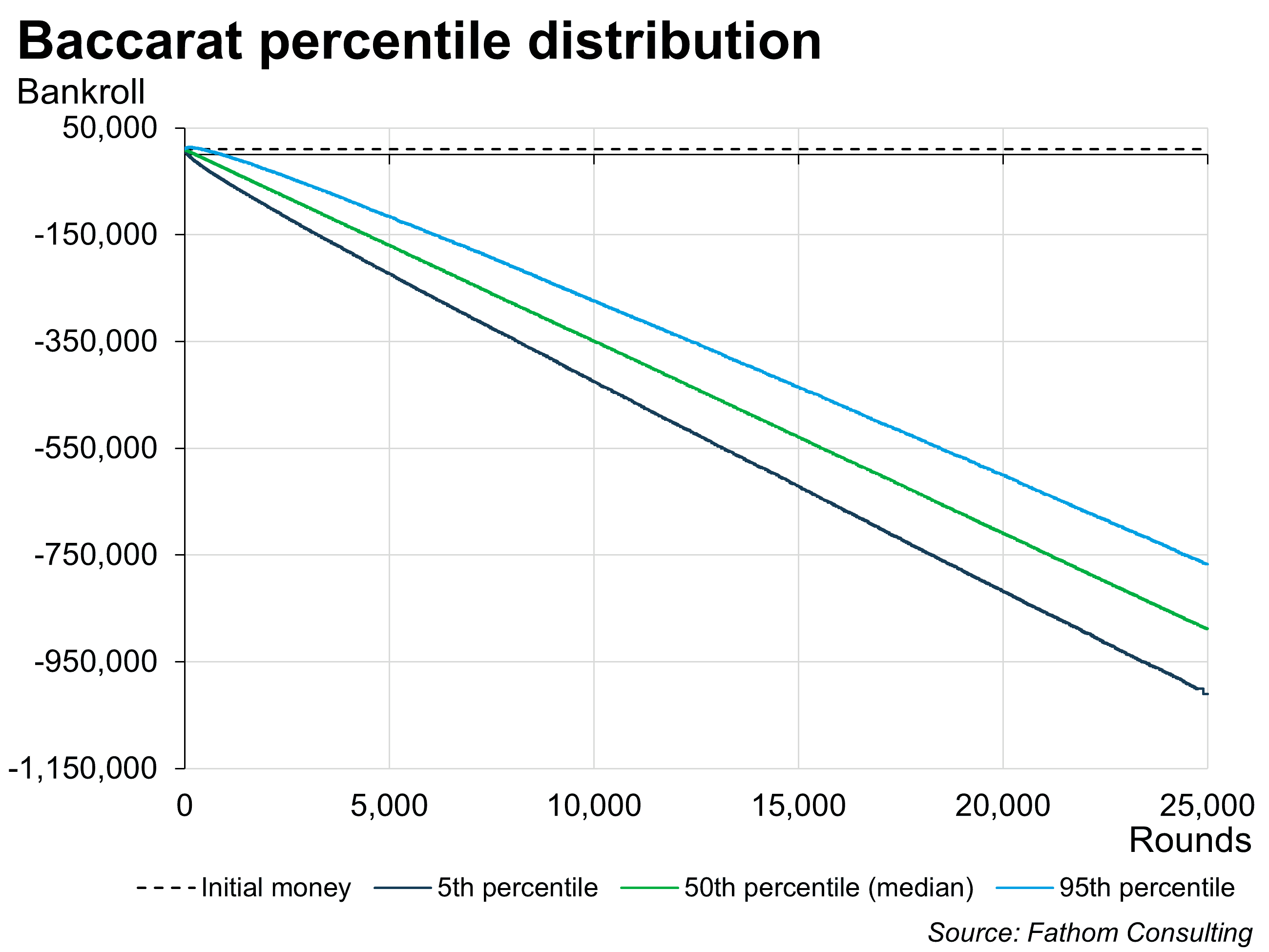A sideways look at economics
The iconic Casino de Monte-Carlo perches on a cliff in the Monte Carlo district of the Principality of Monaco, overlooking the coastline of the French riviera. Princess Caroline, the de facto regent of Monaco, officially opened the palatial gambling den in July 1865 as she sought to turn the principality’s finances around. Two towns — Menton and Roquebrune — had broken away from Monaco, taking with them their much-needed tax revenues. The casino flourished and succeeded in transforming Monaco’s economy, attracting wealthy foreigners from around the world. However, the princess issued a stark decree which is still in effect to this day: all Monegasques are forbidden by law to gamble and to enter any casino. Her concerns were based on moral and financial grounds. Was she right to do this?
I’m not proposing to address the moral arguments, but to concentrate on the financial ones. To start, let’s first look at the Monte Carlo simulation. This simulation is used to model the probability of different outcomes in any process that involves randomness or uncertainty. Given a specified distribution, it will run thousands or millions of trials using random sampling of the distribution. This approach allows us to see the range and likelihood of possible scenarios. The methodology was invented by a Polish mathematician and nuclear physicist named Stanisław Ulam who worked on the Manhattan Project. The Monte Carlo simulation was named not only for its reliance on randomness and probability — much like a game of chance — but also as a playful nod to Ulam’s uncle, who would often borrow money from relatives with the irresistible excuse that he “just had to go to Monte Carlo”.
To see how much wealth Monegasques would have gained (or squandered) since Princess Caroline’s decree, we must first introduce the idea of the house edge. The house edge is the advantage a casino has over players in any given game. It is the average percentage of the bet that the casino expects to keep over the long run. This does not mean that foreigners and undercover Monegasques could not win at Monte Carlo — they could win, and potentially win big, but over time and a large number of plays, the advantage falls to the casino. Let’s look at the house edge for a few classic table games. For blackjack the house edge can range from 0.5 to 2%; for European roulette this rises to 2.7%, and to 5.26% for American roulette. The house’s advantage can be as high as 14.36% for the tie bet in baccarat. Using these values for the house edge, I ran some Monte Carlo simulations using a Python script I created, to investigate how some punters would have fared using these popular casino games in Casino de Monte-Carlo.
In our hypothetical situation, we assume that the foreigner (or undercover Monegasque citizen) will walk into Casino de Monte-Carlo in the present day with €10,000 in cash. They will also be wielding a credit card from the bank of Mum and Dad, allowing them to go into seemingly unlimited debt. From here they will play one type of game only and stick with it over a certain time period. Each bet per round will be €500, or 5% of the player’s starting amount. If the player wins, they double their bet. This experiment will be repeated across the three iterations of games stated above. For each game, we have casual gamblers who stay the weekend to play anywhere between 25 and 500 rounds of the game in question, and the fully delusional ‘professionals’ who are taking an extended holiday to play at least 500 but maybe as many as 25,000 rounds. We simulate each gambler’s path 10,000 times to get an idea of the outcomes for our different players of each of our three games. From here we look at how the top and bottom 5% of players got on, along with the median.
Our players go first to the blackjack table where they will spend the coming days or weeks gambling and drinking martinis. Here we assume the given blackjack house edge is 0.5% as this table only uses a single deck, and that our players have subjectively good card-counting skills after watching a series of TikTok reels on the matter. The chart below shows that the top 5% managed to secure a profit throughout our 25,000 rounds. The median case doesn’t look too good with bankruptcy striking around the 7000th round. For the bottom 5% it has been a disaster, some leave over €150k in debt. To make it worse, assuming a 0.5% house edge is actually optimistic and does rely on some card-counting skills which may get our players banned from the casino. A more usual house edge would be between 2 and 10%.

Our next batch of players approach the European roulette table, which has a slightly higher house edge of 2.7%. This is one of the lowest house edges that is realistically accessible to most players. Remember, the house edge does not mean you can’t win in the short term. While some of our lucky casuals left the casino early with a profit, a trend is starting to appear. As time goes on, even the top 5% of players eventually face bankruptcy. The median and bottom 5% face quick financial ruin.

Our final batch of players approach the baccarat table constrained to placing only tie bets. The house edge is quite large here, at 14.36%. The casuals are anxious, as they know they’ll need an extraordinary run of luck early on; but our fully delusional professionals will play until the bitter end as they are adamant that it is a ‘skill issue’ and that big losses are a phenomenon reserved for others. Despite their perseverance, looking at the percentiles of the simulated paths in the chart below makes for grim viewing. After very few rounds, all the gamblers are now stone-cold bankrupt without exception. Although the house edge here is particularly large, the trend and the thesis are the same: as time goes on you will lose. A few of the short-term casuals managed to secure some profit very early on but none of the longer-term players did. As time passed, the top 5% fell into debt of nearly €750k, with the bottom 5% exceeding €1 million.

Although this example uses one of the worst possible bets in the casino, the pattern applies more broadly. Take slot machines, for instance: they typically carry a house edge of between 5 and 10%. So, the next time you’re tempted to pull that lever again, in the attempt to claw back some losses, remember — what happened here isn’t just baccarat’s fault. It’s the nature of the game. Over time, the house always wins.
So was Princess Caroline right to ban her citizens from entering the casino given the amounts that would have been lost over 160 years? Personally, whatever the financial implications, I wouldn’t go as far as imposing a total ban — I’m not a fan of telling adults what to do. However, my advice would be that if you do decide to pay a visit to the Casino de Monte-Carlo, make it a short one and quit while you’re ahead!
More from Thank Fathom it’s Friday
Built to last, struggling to change